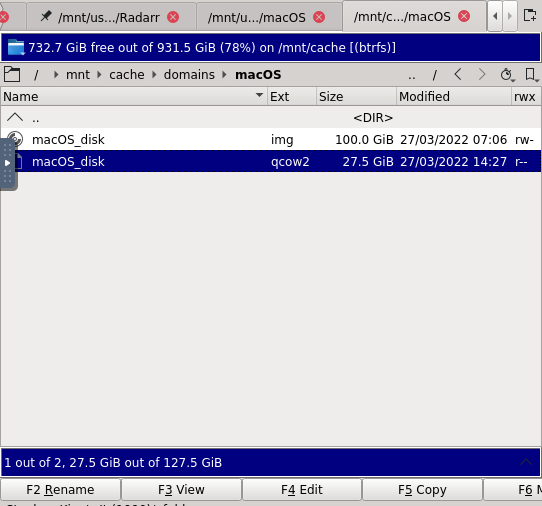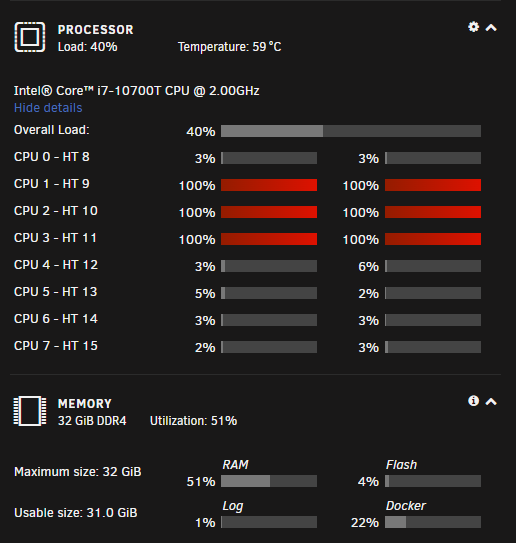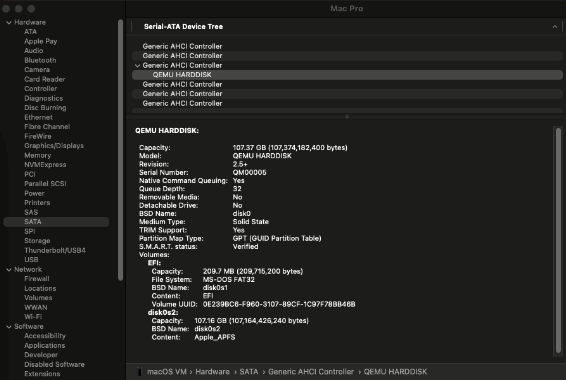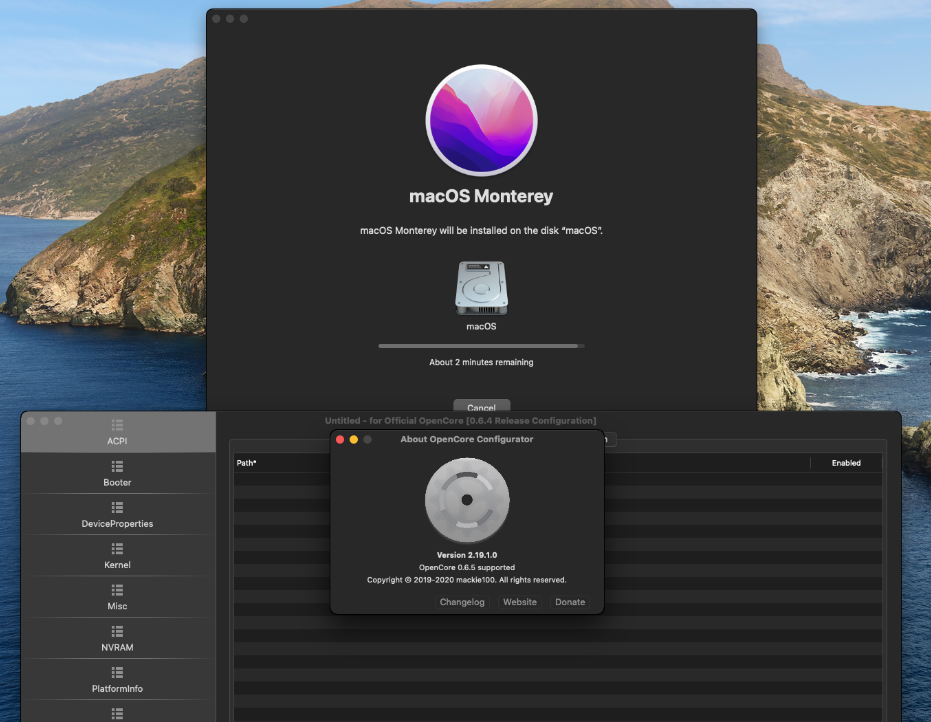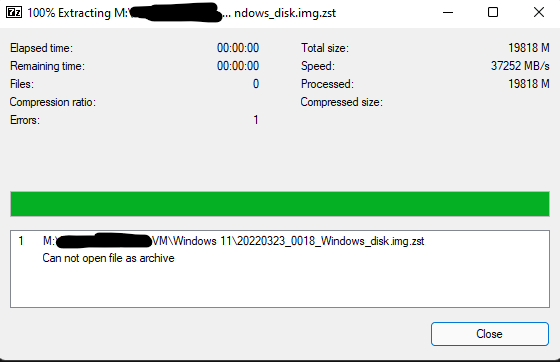-
Posts
224 -
Joined
-
Last visited
Content Type
Profiles
Forums
Downloads
Store
Gallery
Bug Reports
Documentation
Landing
Everything posted by Linguafoeda
-
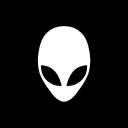
[Support] Linuxserver.io - Sonarr
Linguafoeda replied to linuxserver.io's topic in Docker Containers
Just restored from database and also edited all my docker apps to directly source the appdata folder from the cache drive instead of the unRAID share. I heard that was better way to eliminate overhead that is created for apps that are openly writing to data base constantly. Haven't had any issues since -
perfect - thank you!
-
is there a settings menu / how do i use this software?
-
Ah I see - thank you. So: 1. make sure array is stopped. eject old 4TB drive in slot #5 2. place new 8TB drive in slot #5 3. run new config process, shrink array / remove "slot #5" disk from all shares, then when new config process is done, add new 8TB drive into that same slot 4. start array? 5. use rclone / rsync / krusader to copy files to the 8TB drive in slot #5 using the old 4TB drive connected via USB? How do you copy files from one disk to another without starting an array? Usually I just use krusader and copy everything from usb device -> /mnt/disk5/, but that would conflict with starting the array which would cause a ton of issues with all my dockers / torrents that are looking for files in an empty drive before copying?
-
Sorry last thing - I am trying to fix this separate issue of mac hanging on shutdown ocassionally. I can't seem to figure out how to access the recovery boot partition. I have tried pressing the 0 button held down, spammed it (both tried via the VNC window pre-opened and starting up the VM from fresh as well as restarting inside). Do you have any idea how i can access the recovery partition if those don't work? I seem to remember tweaking something in openconfig to "disable picker", not sure if that disabled me accessing the recovery partition.
-
amazing - I edited the XML (type='qcow2' + source fil=/.../macOS_disk.qcow2) and that worked!!! Thank you so so much
-
thank you - do i need to change the resulting file back to .img after? my Windows vdisk is "Windows_disk.img" but believe it's still qcow2
-
Hmm interesting. Well the command I was basing my assumption on it actually taking up 100GiB was how 1. Krusader (docker app), 2. mc (blue terminal window above) and 3. Unraid GUI were reporting used space. Is there any risk to converting to qcow over raw? If there's no downside and only benefit i.e. fixing cosmetic issue at the least, I'd like to do that if possible if you could point me in the right direction
-
Here's my Mac and Windows disk side by side (I just ran CleanMyMac to further clean up the mac partition down to 26.5GiB). The reason I think it's actually taking up the 100GiB space is that everywhere that my cache drive (NVMe SSD) reports used vs. free space, it is assuming the full 100GiB from the mac vdisk. For example, my usr/mnt/cache only has 5 folders, appdata is ~68GiB, system is 1GiB,, ISOs is 0GiB, Personal is ~0GiB, and that leaves my domains folder which has just two folders & files (Windows_disk.img is 36GiB + macOS_disk.img 100GiB). 68 + 1 + 0 + 0 + 36 + 100 = ~205GiB which is what Krusader and Unraid main tab show as "space used". root@:~# qemu-img info /mnt/user/domains/macOS/macOS_disk.img image: /mnt/user/domains/macOS/macOS_disk.img file format: raw virtual size: 100 GiB (107374182400 bytes) disk size: 26.5 GiB root@:~# qemu-img info /mnt/user/domains/Windows/Windows_disk.img image: /mnt/user/domains/Windows/Windows_disk.img file format: qcow2 virtual size: 100 GiB (107374182400 bytes) disk size: 36 GiB cluster_size: 65536 Format specific information: compat: 1.1 compression type: zlib lazy refcounts: false refcount bits: 16 corrupt: false root@:/mnt/user/domains# cd /mnt/user/domains root@:/mnt/user/domains# ls -la total 0 drwxrwxrwx 1 nobody users 24 Mar 23 00:10 ./ drwxrwxrwx 1 nobody users 20 Mar 27 04:30 ../ drwxrwxrwx 1 nobody users 32 Mar 23 00:10 Windows/ drwxrwxrwx 1 nobody users 28 Mar 22 23:05 macOS/ root@:/mnt/user/domains# cd macOS root@:/mnt/user/domains/macOS# ls -la total 27793620 drwxrwxrwx 1 nobody users 28 Mar 22 23:05 ./ drwxrwxrwx 1 nobody users 24 Mar 23 00:10 ../ -rw-rw-rw- 1 nobody users 107374182400 Mar 27 07:06 macOS_disk.img
-
Hmm okay. Do you know if there is a way to convert my disk to get this option back? Or otherwise get the ability to have a dynamically sized vdisk?
-
This is my results from the above steps but the space taken up on the SSD itself is still 100GiB. Does the disk size being ~30GB vs. 100GB virtual size (which is fixed) never get reflected in usable space to the actual SSD (maybe I misunderstood this part, I thought that what we were actually solving similar to how my Windows vdisk only shows up as ~36GiB used)? Step 1: Initial Setup root@:~# qemu-img info /mnt/user/domains/macOS/macOS_disk.img image: /mnt/user/domains/macOS/macOS_disk.img file format: raw virtual size: 100 GiB (107374182400 bytes) disk size: 32.3 GiB Step 2: Copied 3.4GiB movie file root@:~# qemu-img info /mnt/user/domains/macOS/macOS_disk.img image: /mnt/user/domains/macOS/macOS_disk.img file format: raw virtual size: 100 GiB (107374182400 bytes) disk size: 35.8 GiB Step 3: delete 3.4GiB movie file root@:~# qemu-img info /mnt/user/domains/macOS/macOS_disk.img image: /mnt/user/domains/macOS/macOS_disk.img file format: raw virtual size: 100 GiB (107374182400 bytes) disk size: 32.2 GiB
-
I see this screen on my VM when attempting to shut down - it's maxing out the CPU. Is this related to trying to run the trim command? Here is the terminal log file for the spaceman command https://gist.github.com/jeff15110168/4949afeb29f4d773b6c2874e0ca60547
-
great, sata0-0-2 worked! i enabled the XML edit, enabled trim and below is what system report shows. My macOS vdisk.img is still being reported as 100GiB in the domains folder though I ran command log show --start $(date +%F) | grep -i spaceman_trim_free_blocks and nothing showed up. Essentially - I think TRIM is enabled but not running at boot? my XML now: <devices> <emulator>/usr/local/sbin/qemu</emulator> <disk type='file' device='disk'> <driver name='qemu' type='raw' cache='none' io='native' discard='unmap'/> <source file='/mnt/user/domains/macOS/macOS_disk.img' index='1'/> <backingStore/> <target dev='hdc' bus='sata'/> <boot order='1'/> <alias name='sata0-0-2'/> <address type='drive' controller='0' bus='0' target='0' unit='2'/> </disk> ... <qemu:commandline> <qemu:arg value='-set'/> <qemu:arg value='device.sata0-0-2.rotation_rate=1'/> <qemu:arg value='-usb'/> <qemu:arg value='-device'/> <qemu:arg value='usb-kbd,bus=usb-bus.0'/> <qemu:arg value='-device'/> <qemu:arg value='************************'/> <qemu:arg value='-smbios'/> <qemu:arg value='type=2'/> <qemu:arg value='-cpu'/> <qemu:arg value='Penryn,kvm=on,vendor=GenuineIntel,+invtsc,vmware-cpuid-freq=on,+pcid,+ssse3,+sse4.2,+popcnt,+avx,+aes,+xsave,+xsaveopt,check'/> </qemu:commandline> </domain>
-
Had a question on how to easily upgrade a drive to larger capacity for a system with no more bays / slots and one not running parity (don't have enough bays for parity, plus I have everything 1:1 backed up to cloud so just not running for now but may plan to in the future). Say I have 5 slot machine with 4x8TB and 1x4TB, running without parity. I want to upgrade the 4TB drive in Slot #5 to a new 8TB drive, what steps do I need to do to copy over all the files on that existing 4TB and replace the same physical slot #5 with the new 8TB drive so that nothing share/docker/torrent seeding wise breaks? This was my initial plan but let me know if I'm missing anything: 1. connect the new 8TB drive via USB, format to XFS (i.e. make it compatible so it's plug and play with when it goes directly into array in step 4.), copy all the files from the 4TB disk currently in array using Krusader or rsync 2. Stop array, wipe / format the 4TB drive in Slot #5 3. run new config process to shrink array, make sure 4TB disk isn't in any old shares (note down which ones it is in) 4. Add new 8TB drive physically into same slot #5 that 4TB was in, add it to array, add 8TB drive back into relevant shares noted in step 4 5. start array
-
I have just 1 vdisk setup using the macinabox SpaceInvaderOne guide. How do i get the alias of the disk? "<qemu:arg value='device.sata0-0-0.rotation_rate=1'/>" doesn't work for me since I don't have "alias name" function anywhere in my XML. I've tried "sata0-0-3", "sata0-0-0", "drive", "disk" and none seem to work <devices> <emulator>/usr/local/sbin/qemu</emulator> <disk type='file' device='disk'> <driver name='qemu' type='raw' cache='none' io='native' discard='unmap'/> <source file='/mnt/user/domains/macOS/macOS_disk.img'/> <target dev='hdc' bus='sata'/> <boot order='1'/> <address type='drive' controller='0' bus='0' target='0' unit='2'/> </disk> <controller type='usb' index='0' model='ich9-ehci1'> <address type='pci' domain='0x0000' bus='0x00' slot='0x07' function='0x7'/>
-

[Support] SpaceinvaderOne - Macinabox
Linguafoeda replied to SpaceInvaderOne's topic in Docker Containers
1. Is there a way to passthrough the integrated GPU from my 10th gen i7 CPU? I don't have a slot available to plugin a GPU but would love to get rendering working properly if there are any workarounds 2. How do i find the alias-name of the disk? I tried "sata0-0-3" but I don't have "alias name=" in my own XML. I assume by a/b/c you meant you need to make the XML changes as well as run the "sudo trimforce enable" function in macOS terminal. When i check "About this Mac" -> "Storage", it shows "70GB free of 107GB" so it looks like my macOS VM should be around ~30-40GB. when I ran that above command i get much different results: qemu-img info /mnt/user/domains/macOS/macOS_disk.img image: /mnt/user/domains/macOS/macOS_disk.img file format: raw virtual size: 100 GiB (107374182400 bytes) disk size: 89.3 GiB 3. will try that and report back. thank you so much! -
are you accessing from an ipad or iOS device? this is exact same issue i have with messed up GUI. would love if the developer @GuildDarts is able to find a solution for this Bump
-

[Support] SpaceinvaderOne - Macinabox
Linguafoeda replied to SpaceInvaderOne's topic in Docker Containers
I tried to update to Monterey internally and i got this screen that won't budge. Not sure what may be missing / error. EDIT - I force quit the VM, restarted it and it went about successfully updating to Monterey! Had a few follow ups: 1. I’m seeing major issues with Chrome running properly. Essentially it doesn’t render similar to issue describe in this thread on reddit. Anyone else have similar rendering issues on Monterey? I don’t have an external GPU plugged in if that matters. 2. Is there a way to reduce the size of the macOS vdisk to actual usage vs. its pre-allocated to 100GB? I noticed my Windows VM is dynamic size (i.e. i set it up as 100G with VirtIO vdisk bus, and it currently takes up 36G as vdisk1.img in Domains) while macOS vdisk is always a flat 100GB. Would make backing up much smaller if it can be dynamic but not sure how to set that up with my existing macOS vdisk 3. just generally, how would i go about updating my opencore to the latest version? I think I installed macinabox Big Sur with opencore 2.19.1.0 as I had issues trying to install with 2.50. Below is the current version I have -

[Support] SpaceinvaderOne - Macinabox
Linguafoeda replied to SpaceInvaderOne's topic in Docker Containers
Thank you, that is very helpful. I'll bsckup the XML + vdisk as an initial step. Which bootloader supports Monterey / how do you know you have the right one installed before going down the upgrade path -
Sorry am a total noob, but I tried installing the "zstd-x64.dll" codec on my Windows PC, but when I try to unzip using 7-zip (right click on the file -> 7-zip context menu -> extract here) it gives me error "can not open file as archive". I also tried to unpack this .zst file in Krusader where it says "unsupported archive type". Any advice? EDIT: nevermind, I installed modern7z and it worked like a charm. I would recommend the owner of this plugin link it somewhere in the OP or within the info-bubble that shows up when toggling the zstandard compression option (I am using level 7 based on the benchmarking done in this thread here.
-

[Support] SpaceinvaderOne - Macinabox
Linguafoeda replied to SpaceInvaderOne's topic in Docker Containers
Hello - I have Big Sur installed and working correctly right now. I am trying to find information of how to upgrade to Monterey and I cannot find a clear answer. A few people tell me "just go ahead and upgrade inside the OS" and then I found posts like yours that seem quite complex and I get confused. Can someone please pin a guide or explain exactly how one is supposed to update to Monterey if you installed Big Sur via macinabox like the original guide had? -

[Support] SpaceinvaderOne - Macinabox
Linguafoeda replied to SpaceInvaderOne's topic in Docker Containers
Bump - what do I need to backup so that if the update to Monterey within the OS fails, I can restore to my last stable version?


